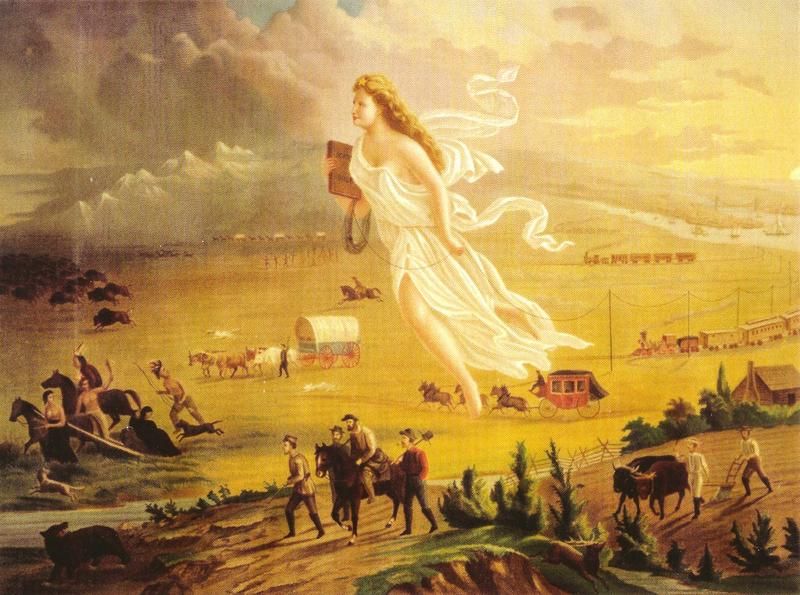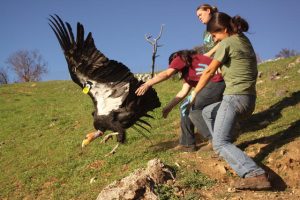It’s often said that Native Americans have always lived in harmony with nature, understanding how to live sustainably with Mother Earth. This is partially a myth, but one that we embrace, because it is very much our goal today to restore our connection to Mother Earth.
The Noble Savage
This notion of harmony, that indigenous peoples are so in tune with their land that they are essentially part of it, in sync with the natural resources, and in a respectful relationship with all the other creatures, is flattering. But all indigenous peoples around the world are closely tied to the land; they have to be. Why is it that Native Americans have this reputation but subsistence farmers in rural Africa do not? Surely both are dependent on the land and both have cultures and religions that emphasize our bond to the natural world.
In the US, I posit that this stereotype, based on some truth, is part of the “noble savage” caricature, a kind of de-humanizing othering that evolved in the aftermath of ethnic cleansing and genocide, as if Natives were too good to be true, or at least too pure to coexist with modern Western civilization, and thus sadly had to disappear, for the sake of white expansion – like the condor or the passenger pigeon or some other species on the edge of extinction. So they name football teams after us in honor of us, or at least honoring the sacrifice of these noble people, who had to be sacrificed for the sake of modern civilization. Like a run-down zoo, they put us on reservations but only portray us “in our natural state”, with Plains headdresses and tepees.

Over-exploitation
The truth is that Native Americans have been and remain normal people, quite capable of mistakes and not always living in harmony with nature. The first humans in North America unquestionably played a role (along with a changing climate) in the mass extinction of large megafauna—overhunting mammoths, mastodons, giant buffalo, giant sloths, giant armadillos, and dozens of other species to extinction. This happened in the first few thousand years after humans arrived in Europe, Asia, and Australasia. The pattern was identical in North and South America.
Native Americans did live largely in harmony with the remaining game in North America thru the 1600s, probably because human populations were modest and were able to avoid over-exploiting the land. We managed landscapes thru controlled burns, promoting the development of grasslands to promote certain game species, and learned to fish and farm in sustainable ways. This is no different from other indigenous peoples around the world who lived in harmony with nature most of the time. They had to; it was all there was.
In North American, much of that changed when Europeans arrived and wanted beaver skins and deer skins and buffalo hides for commercial markets. But it wasn’t them that killed all those animals—it was Native hunters and a basic human desire to seek gains from trade. Acting as low wage workers in an international capitalist system, Natives borrowed guns and ammunition on loan, hunted and brought back the hides, and traded them for European goods, such as pots and pans, axes, and Stroud cloth manufactured in England to Native American specifications.
Sometimes, as with the Comanche, the Natives developed powerful empires that grew more powerful than the European ones and stopped their expansion, and even ended up flipping the tables, selling impoverished Europeans guns and horses. But most of the time, the Native hunters fell into so much debt that their tribal governments ended up ceding land to Europeans to settle those debts.
For Thomas Jefferson, putting Native hunters in debt was a deliberate policy. He wrote, “… we shall push our trading uses and be glad to see the good and influential individuals among them run in debt. We observe that when these debts get beyond what the individuals can pay, they become willing to lop them off by a cession of lands….”
But regardless of economic success or failure, market hunting by Natives helped drive animals to the point of local extinction—first with beaver in New England in the 1600s, with deer across the East in the 1700s, and then with buffalo on the Plains in the 1800s (where white hunters eventually finished them off with a horrific flurry in the final decades).
Restoration
Nevertheless, the stereotype is based on truth. Especially relative to ambient white culture, Native American communities are connected to the land in profound cultural and spiritual ways and are striving to retain and restore that connection. For many, reconnecting with tribal ways, invariably with a strong connection to nature, is a major pathway out of historical trauma.

Today, Native American governments and people are largely at the forefront of efforts to restore ecosystems, stop climate change, and embrace Mother Earth. Here are just a few examples from the West Coast.
The tribes in Washington co-manage the state’s fisheries with federal and state counterparts. The Swinomish are rebuilding oyster reefs and restoring wetlands. The Yurok are working with state and federal governments to restore condors to the north coast of California, while the Cahuilla are doing the same for bighorn sheep in the south. The Karuk are spearheading a plan for controlled burns in California to reduce mega-fires. The Salish and Kootenai are doing the same in Montana.
Tribes across the land are leading fights against new oil pipelines, and are leaders in climate adaptation planning.
We can embrace Mother Earth, and we should, but we should also recognize the past—that the noble savage stereotype is a way of “othering” indigenous peoples as abnormal. Native Americans are people. We’ve committed basic human sins of over-exploitation in the past, but we are now among the world’s leaders in finding a better way and restoring our connection to the land.
Note: the condors released by the Yurok are now flying free. You can follow their progress here.

